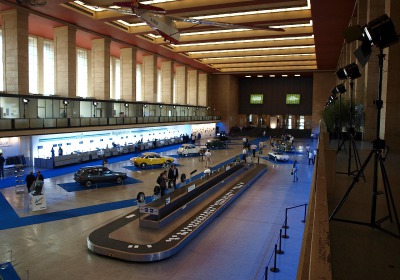2011 Michelin Challenge Bibendum
Fri, 10 Jun 2011This year marked the 11th running of the Michelin Challenge Bibendum. For those not familiar with the concept, the Bibendum aims to tackle the prolific issues facing the modern motorist, namely CO2 emissions and fuel consumption. Billed as a forum, the five-day event aims to bring together a variety of sources, manufacturers and suppliers to debate on future mobility.
This year’s Bibendum, held at the now defunct Templehof Airport Berlin, included a collection of OEMs, start-up manufacturers and entrepreneurs, all with their own future vision of personal transport.
Despite the show’s attempted feel of vibrancy and enthusiasm, it there appeared to be something missing. In an age of prevalent austerity toward fossil fuels, the EV phenomenon seems to have slowed to the point of failing to deliver. In previous years, there has been a veritable hubbub around the advent of the EV. Now that they are on the market, it feels like there is an unfulfilled void in their wake. It certainly felt that way at the Bibendum at least: OEMs simply showcased another electric variant, but the fanfare and ticker tape were missing.
There has been an anomaly between design and the EV since its reintroduction as a viable alternative to conventionally powered vehicles. What should an electric car look like? The Bibendum certainly provided answers on both ends of the spectrum.
OEMs like Porsche presented cars like the Boxster E. Sporting a relatively unchanged aesthetic to the production 987 Boxster, the only noticeable difference came under full throttle. Juxtaposed against this were the likes of small scale independent carmakers like Venturi who offered up the Volage, a sleek, well-resolved two-seat sports car penned by Sacha Lakic.
In between these two polar opposites was a heady mixture of good and bad; predominantly bad. The Protoscar Lampo2 is one such example. From its awkward gawping DRG to its stubby wheelbase and half covered wheels, it is a cavalcade of lines with no real cohesion. Granted, whilst most of the cars on display have been design engineered to optimise aerodynamics and efficiency, there are no reasons why function and form cannot work together. And despite its challenging appearance, it does highlight a very potent fact: the chasm in design between the conservative OEM manufacturers and the smaller companies willing to produce something completely unique in the EV market is growing.
Continues →
By John O'Brien

